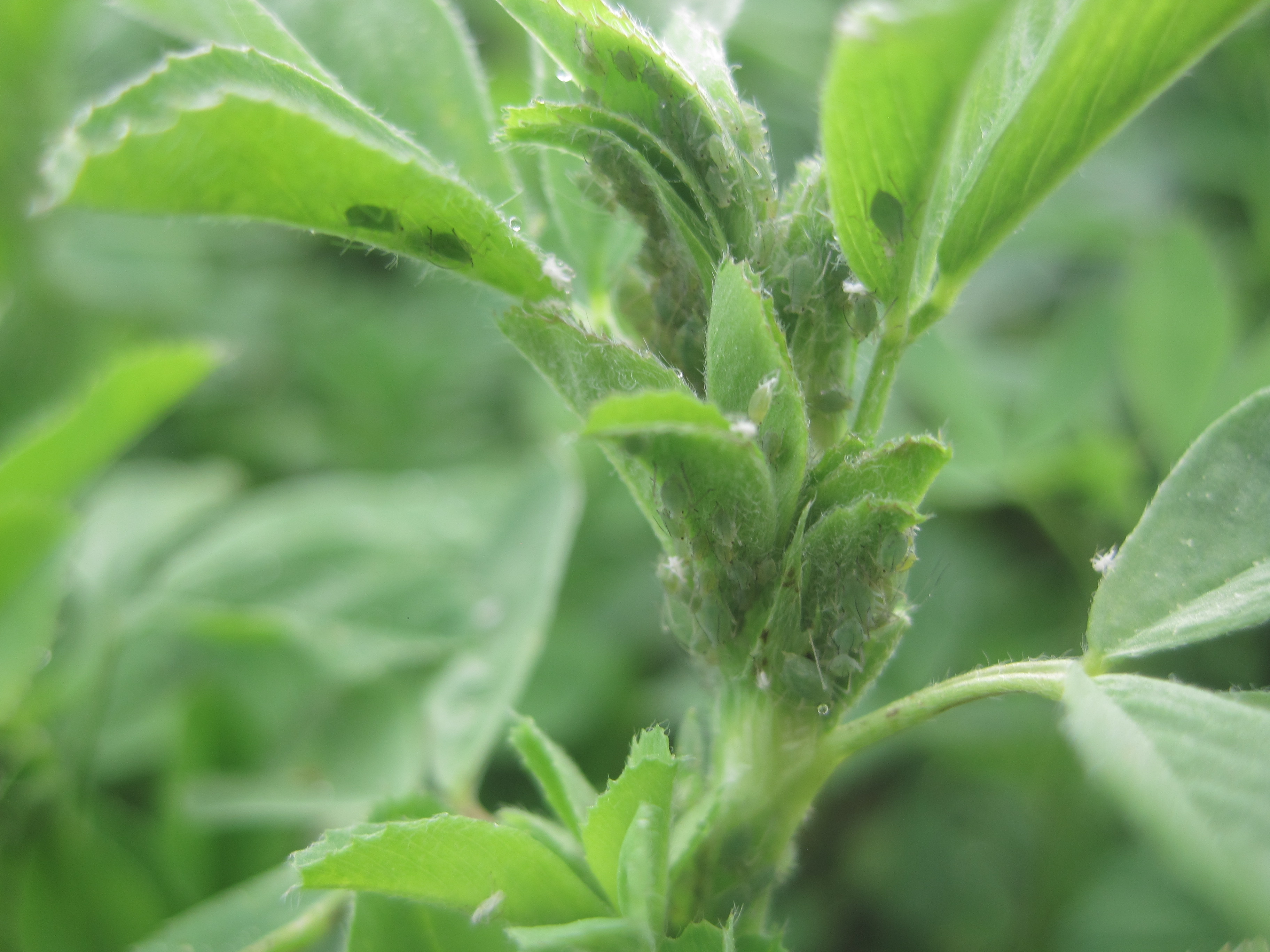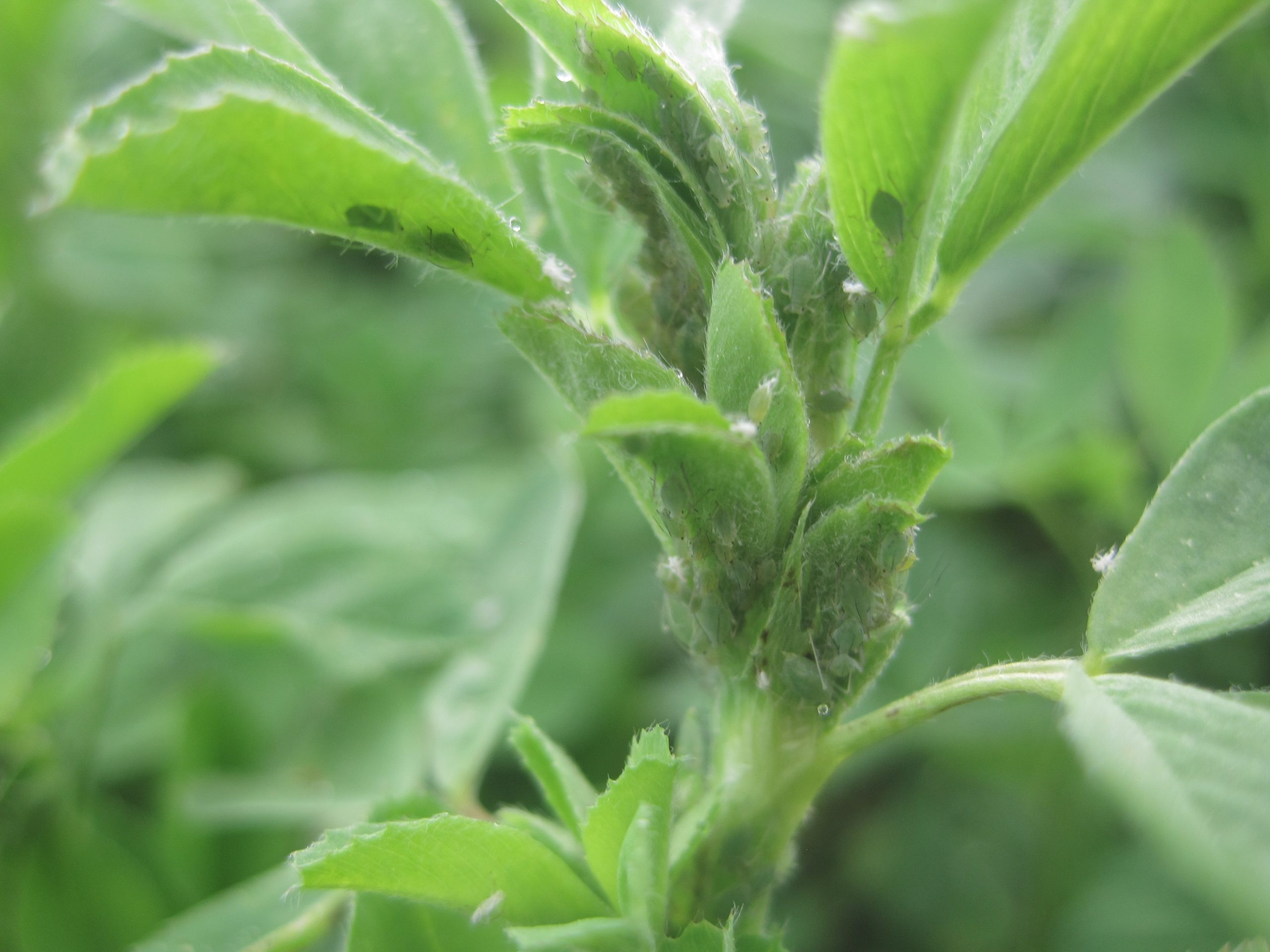Posted on behalf of Prof. Derrick Moot
After mild winters, aphid numbers can build rapidly so check stands regularly. There are at least three species of aphids that can cause problems in different weather conditions so be vigilant.
Check the top of plants where the leaves are compact and emerging. If none are present sweep hands up from the bottom of the crop and see if there are any on your hands or socks etc. as you walk through a paddock.
Aphids from low populations can build to damaging levels within a week.

High numbers of aphids can also cause phyto-oestrogen levels, particularly a compound called coumestrol, in lucerne to increase. These compounds can affect ovulation rates of grazing stock, so be aware of the status of your conserved feed and if infected material was conserved do not use it for supplemental feed at flushing/mating.
If you would like further information on the effects of phyto-oestrogens may have on fertility levels of grazing stock please see our Review of reproductive performance of livestock if mating or flushing on lucerne (PDF 188 KB).
Aphids can also introduce viruses to crops and this was the reason many stands died in the 1980’s so be vigilant.
Management Options:
- Low aphid numbers and herbage is at least 20 cm high – graze the paddock in normal rotation.
- High aphid numbers and herbage is at least 20 cm high- graze the paddock asap. Check the new regrowth for aphids 10 days after grazing- those that survive the grazing attack the newly emerging shoots.
- Low aphid numbers and the herbage is 40 cm high – cut and carry or graze as normal
- High aphid numbers and the crop is 40 cm high – graze asap. Be aware grazing animals may not like the taste immediately on entry. Check the recovering crop to see if it needs grazing when it is 10 -15 cm high to deal to any remaining aphids that survived the previous grazing.
- High aphid numbers and the crop is 40 cm high for silage – cut the crop and make hay or silage. DO NOT use this feed for flushing on later in the season.
- Crop less than 20 cm tall and high numbers of aphids – spray to eliminate them from the crop.
Longer term management decisions:
Consider having more than one cultivar of lucerne on your property. If for some reason one cultivar is more susceptible to attack, or develops at a different time, a range of cultivars may offer opportunities to graze paddocks at different times. Your seed supplier can provide information on the pest and disease resistance levels of individual cultivars on request and can explain the differences in the susceptibility/resistance levels of the individual cultivars.

